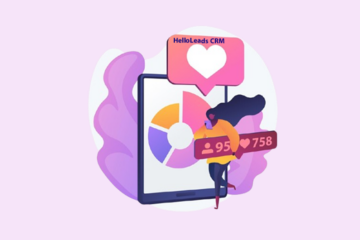
Where do you go when you’re looking for a new brunch location, another show to binge-watch on Netflix, or the perfect pair of jeans? Before you start exploring possibilities on your own, you’ll probably ask your friends and family for ideas—and you’ll probably trust those recommendations.
That is why consumer referral schemes work so well.
If someone you know suggests that you try a certain product or service, odds are you will at least consider it. Businesses understand the value of word-of-mouth marketing, so they often encourage their top customers to serve as brand ambassadors and refer others in exchange for rewards (like a discount or gift). When a new customer makes a purchase, both parties benefit: the advocate receives a reward and the firm benefits.
Why Customer Referral?
Customer referral programs can help you expand your customer base while also generating continuous revenue stream for your company. But, before you begin, prepare yourself for success by understanding the fundamentals. Companies employ referral programs because these are effective at acquiring new clients, building trust, and increasing sales.
Why does Customer Referral Work?
Customer referral is the most effective type of advertising possible, and it is usually free. It is effective for five reasons.
- The volunteer salesperson is a reliable friend or consultant.
- The advice is coming from a third party, not the manufacturer.
- The message is usually authentic and devoid of advertising.
- The worth of the product or service is tailored to the recipient.
- The referrer explains the value till the recipient fully comprehend it.
How does a Customer Referral Programme work?

A good referral program incorporates the appropriate technology, products, messaging, and, perhaps more importantly, referral incentives.
Most organizations will utilize a marketing software solution to track a customer’s shared referral code or link when developing and implementing a referral program. When a new buyer uses that code or link to make a purchase, your existing customer receives a reward. The new consumer can then repeat the procedure with another person in their network, and so on. This repetition generates a continuous flow of new business, known as a “viral loop,” all because of a single customer. People are frequently willing to share something – usually knowledge – if it makes them appear or feel better. As a result, they frequently utilize (or “spend”) their social currency to share their customer experience or recommend products they appreciate and believe others would enjoy as well. When these promoters’ social media connections see a product recommended by a reliable source, they are more likely to purchase it. When they buy something, it boosts both your company’s and the recommender’s social currency, as well as your revenue.
To learn what customers are thinking, most customer-focused firms employ deceptively simple approaches. They comprehend the chain reaction that is client pleasure. According to Technical Assistance Research Program (TARP), a consumer loyalty research business, satisfied customers tell an average of 5 to 8 people about their experience with a company or a product, while dissatisfied customers tell 10 to 16 people.
Let’s apply the TARP formula to understand the exponential potential of dissatisfied customers. For argument, we’ll use the lower ranges. Assume you have 10,000 clients whose satisfaction you want to measure using a survey instrument. Enter the satisfaction data from your own company to see the effect.
How to gauge the buzz generated by customer feedback
Total Number of Customers = 10,000
% of pleased customers = 65% or 6,500
Satisfied Referrals = 6500 * 5
Total Happy Referrals = 32,500
% of disgruntled customers = 35 %or 3,500
Dissatisfied Referrals = 3500 * 10
Total Unhappy Referrals = 35,000
This shows that more than half of your referrals can be negative, even though only a third of your customers are dissatisfied. This is compounded by the accessibility to the internet and social media.
This is why when we look at a customer referral program, we need to understand that because it is your brand champions who make the suggestions, referral programs can result in more than simply another sale – they frequently result in increased customer loyalty. Your supporters know what they like about your brand and products, so they’ll look for people in their network who value the same qualities and benefits.
The tide of dissatisfied customer referrals can change in your favor and lead to deepening customer loyalty.
Creating and implementing a customer referral program can be a daunting endeavour, but taking it one step at a time will make the process less onerous. You must select incentives that are appealing to your target audience and tailor your program to your company’s specific KPIs and goods. Preparation is key to running a successful referral campaign, so make sure you have everything in order before launching your program.
1 . Setting your Goals
Inquiring with your clients and yourself about your ultimate aim will assist you in determining your path and what you want to undertake. You will save time and money, and you will be able to achieve your goals more quickly.
A referral program may be viewed as a workflow, and like with any workflow, you must understand what has to happen to move from point A to point B.
This means that you must establish KPIs.
KPIs are just as crucial as goals. They demonstrate what works before you make any major decisions.
2 . Contact your Customers (Internal & External)
Because existing customers are the driving force behind any referral program, you need to ensure that you have a clear and real relationship with them.
Constant communication with your consumers will reveal what they appreciate the most and what they prefer to share with their peers.
They will speak from experience, which is your greatest advantage. Not only to promote your goods but also to improve elements and details that you may have overlooked previously.
Another fantastic way to achieve this is to look closely at what’s going on in all of your company’s departments.
3 . Determine your referral program incentives and rewards

Before you can use your referral program to attract new clients, you must first decide on incentives that will encourage your present consumers to promote your company. Do your homework and get to know your consumers so you can tailor referral program rewards to their interests. However, make sure you stick to your budget – you don’t want your referral program to cost you money. Some of the more prominent referral program incentives are:
- Coupons or discounts
- Points or store credits
- Product or service enhancements
- Subscriptions or free stuff (giveaways)
- Personalized swag
If you want to start a referral programme but are on a low budget, see if you want to bundle any excess products sitting around, which can be used as referral incentives.
4 . Choose who will receive the awards or incentives.
Once you’ve finished building your program, choose a software that not only handles it but also assists you in maintaining the consumer relationships you’ve built as a result of it.
Look for a software that can:
- Keep track of your referral links—both on the sender’s and receiver’s end.
- Marketing efforts that are A/B tested
- Examine crucial success indicators.
- Conversions (when your users’ referrals result in sales) should be tracked.
A customer relationship management (CRM) system is also essential. You will benefit from the following:
- Maintain contact with your prospects.
- Maintain customer relations
- Make customer communications more personal.
- Keep a record of your customer’s preferences.
With the vital information provided by a CRM, you can alter your program as needed to fit the particular demands of your clients — and your company.
5 . Consider your distribution channels.
This phase is critical since it is how you will present your offer to your customers. So, first and foremost, it must be simple for the customer. Some of the most effective and widely used distribution channels are:
- Landing Pages
- Emails
- Messages
- Newsletters
- Product enhancements
- Blog entry
- Chats in real-time
- Chatbots
A referral program, like any other marketing effort, necessitates a well-planned approach. That is why you must carefully select your distribution channels.
Examine where you get the most traffic, which tactics your existing clients like, and discard the others that don’t work.
You now understand which distribution channels are best for you and your target audience. The next step is to automate as much as possible.
Once all the steps are in place, watch your sales conversion cycles shrink and your customer churn reduce drastically.
Share this blog :










